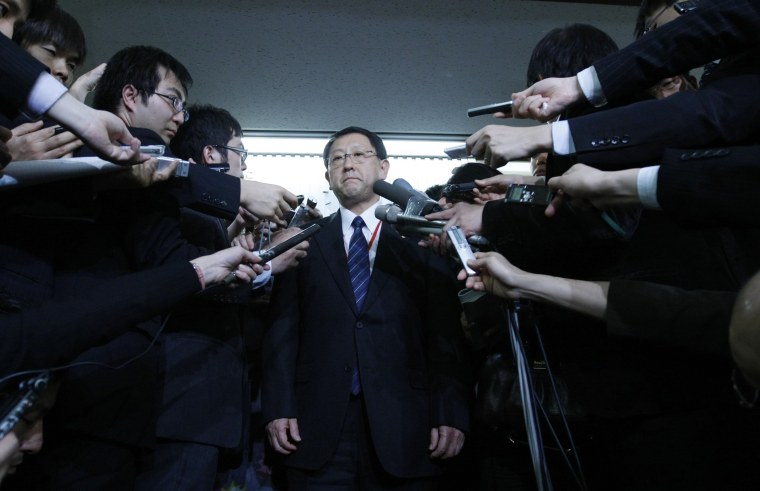The complacency that brought General Motors, Ford and Chrysler to their knees seems to have infected Toyota, too.
The Japanese automaker's products have been a quality byword for American drivers, so much so that its management and manufacturing techniques have long been studied and copied by rivals in the United States and abroad.
Evidence has been building for years, however, that Toyota may have sacrificed its reputation for excellence to the quest for market share and that, in its smugness, it may have ignored its customers and its own management principles.
“Toyota seems to have taken a page out of the playbook from the bad old days of the Detroit Three — when vehicles were designed and built to the lowest common denominator — and when 'good enough' was good enough,” observed Peter De Lorenzo, industry blogger and author of “The United States of Toyota,” a book charting Toyota’s growth in the U.S.
Blow to reputation
The latest blow to its Toyota's sterling reputation came Tuesday, when company officials announced they would recall 437,000 hybrid vehicles worldwide for braking problems. The newest version of its flagship Prius hybrid was among the autos recalled.
The announcement boosted the number of Toyota vehicles recalled since October to more than 8.4 million, one of the largest series of auto recalls in history.
Car reviewers have been lowering their marks on Toyota for some time, pointing out little construction flaws such as misaligned dashboards and crooked glove compartments that may have been clues to the larger safety-related issues that have emerged.
“Visible problems make you wonder about things you can’t see,” said Jeff Bartlett, deputy online editor for autos at Consumer Reports.
Back in November I panned Toyota's Venza crossover, one of the vehicles now on the recall list, saying it "may well be Toyota’s predicament embodied in steel, rubber and glass. And plastic. Loads of cheap, shiny, sloppily installed plastic."
Consumer Reports’ February issue reports that the Lexus HS250h they bought had a crooked glove compartment door.
Less than a decade ago consumers viewed the quality of new Toyotas to be among the best in the industry, according to findings by Art Spinella, president of CNW Research. But by 2006, a growing number of consumers began to report their perception that the quality of the company’s products was slipping.
Ranking slips
Now Toyota ranks 16th in perceived quality, according to CNW’s surveys, behind brands like Mazda, Volkswagen and Volvo, for which quality has not historically been a claim to fame.
Not what you'd expect from the company that overtook General Motors last year as the global auto sales leader.
Fear of losing that momentum may have pushed the company to simultaneously expand production at a furious rate while whittling costs in a bid to retain its pricing advantage. Quality may have been the victim, however.
“The slow but ploddingly sure Toyota method of incremental sales increases year-over-year followed by a correspondingly gradual increase in capacity — while accounting for its usual high quality standards — gave way to a frenzy of plant building and a complete abdication of what it once stood for when it came to quality,” De Lorenzo said.
Toyota’s lack of focus on the core task of building the best cars it possibly can stands in contrast to the responses of Ford and Honda to adverse situations. When Ford began running low on cash several years ago, the company dumped its glamorous Formula One racing team with its associated racing components businesses, sold off non-critical distractions like Jaguar and Land Rover and exited extraneous industries like the British tire store Kwik-Fit.
When the global economic slowdown struck a year and a half ago, Honda also dropped its costly Formula One racing program as well as less-costly motorcycle racing programs that the company has long considered core to its self-image. The company dropped the slow-selling S2000 sports car model and pulled the plug on development of a mid-engine super sportscar successor to the Acura NSX. The company said it was reassigning all of the engineers from these projects to tackle the safety and efficiency challenges carmakers are facing.
Toyota didn’t drop its Formula One program — rumored to have the biggest budget of any of the teams — until a year later. And it completed development of its own mid-engine sports car, the Lexus LFA, reluctant to cancel it after a decade’s work and a cost said to be as much as a $1 billion.
Such decisions do not reflect the quick reflexes and stern judgment needed to stay atop today’s car industry, analysts said.
“It will take years and billions upon billions of dollars for Toyota to recover from this,” De Lorenzo predicted.
